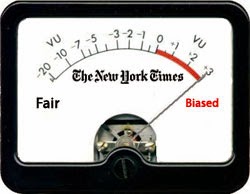
FN/fake-news-msm hader Israel og lyver ofte for at svine Israel til. Her er lidt modgift :
Taget herfra
The claim that 70% of Gaza’s casualties are women and children just doesn’t add up. Why? This figure only reflects a sample of about 8,000 reported deaths, which leaves out a lot of context. Never mind that in the overall toll, Hamas doesn’t include its own combatants, and inconsistencies in counting methods, like open-source Google forms, mean these numbers may be very misleading. For real understanding, the media needs to ask harder questions.
Taget herfra
Løgn som sædvanligt

Shawarma, Smoothies And… Starvation? New York Times Prints Most Contradictory Gaza Claims Yet
Is it possible to be starving while munching on a hot chicken shawarma topped with homemade garlic sauce?
If you’re a New York Times journalist, then the answer is absolutely.
In ‘Coffee, Juice, Shawarma: Tiny Traces of Normal Life in a Ruined Gaza,’ the NYT attempts to showcase life in the Gaza Strip, where most residents are allegedly “struggling just to survive Israel’s assault on Hamas,” with experts predicting “imminent” famine.
But then the article takes an oddly contradictory turn, painting a strikingly different picture of Gaza life: one of long lines at Chef Warif, a well-known eatery in northern Gaza, where customers queue for “Syrian-style shawarma sandwiches” wrapped in flatbread and topped with the restaurant’s signature garlic sauce.
Chef Warif, located in Gaza City — the same northern area repeatedly described by the publication as on the brink of famine — is thriving. This is the region where, according to recent NYT reports like ‘In Northern Gaza, Hunger Looms Over Daily Existence’ and ‘U.N.-Backed Panel Warns Action Needed in Days to Avert Gaza Famine,’ even milk and water are in desperately short supply.
And yet, the NYT now paints a picture of families queueing up for shawarma, not survival. Customers’ primary complaint? That the meat isn’t as fresh as before the Hamas-led terror attacks on October 7 last year.
The NYT notes the restaurant owner is forced to buy meat “frozen and at steep prices from traders importing it to the Gaza Strip,” which raises the question: why is food so expensive in Gaza when humanitarian aid is entering the territory daily? And, if frozen meat is being imported, why is Israel being accused of preventing goods from crossing the border? On November 18 — the same day this piece was published — 137 humanitarian aid trucks entered Gaza, and over 800 trucks are queued at the border, awaiting pickup by international organizations for distribution.
The real reason for skyrocketing food prices? Hamas. Since the start of the war, Hamas has stolen vast quantities of humanitarian aid, hoarding it and selling it at grossly inflated prices. This isn’t speculation; even the NYT has previously reported how “Hamas has stolen, or tried to steal, aid shipments for its own use,” with accounts of terrorists shooting and beating Palestinians who attempt to take food supplies.
But in this piece, the NYT conveniently glosses over these facts, indulging instead in contradictions. On one hand, we’re told that Gaza’s streets are strewn with “rotting carcasses of horses and dogs,” with the “ground slick with sewage.” Yet just a few sentences later, we’re introduced to a city center where Palestinians relax under “shady trees,” sipping “freshly squeezed mango juice or avocado smoothies,” and chatting over coffee.
The article also insists Gaza is “starving under a near-total Israeli siege” that has “blocked all but a dribble of aid and commercial supplies.” Yet somehow, “Zain’s dessert stand” is bustling, with families lining up for sweet treats. How does a territory described as under “near-total siege” sustain booming dessert sales?
These contradictions highlight the broader issue with the NYT’s reporting. This is the same outlet that repeatedly accuses the IDF of using Palestinians as “human shields” but refuses to apply the same term to Hamas, despite extensive evidence — even from Palestinians themselves — that Hamas embeds within civilian infrastructure.
It’s also the same NYT that produced a flashy interactive feature to demonstrate an apartheid-style inequality on Israel’s road network but couldn’t spare a ballistics expert to verify dubious X-rays allegedly proving the IDF is shooting Palestinian children in the head.
The New York Times’ well-known tagline, “All the News That’s Fit to Print” might be better rewritten as “All the News That Fits Our Narrative.” And that narrative? As nuanced as ever: “Israel bad, Palestinians good.”
Taget herfra
Leave a Reply